Luffa Tuberosa Adhalakkai tuber seeds
Luffa Tuberosa Adhalakkai tuber seeds
Quantity: 2 tubers
Luffa tuberosa is a Momordica cymbalaria, commonly known as Ivy gourd or Scarlet gourd, is a perennial climbing vine belonging to the family Cucurbitaceae. Rather than leaving them to climb, if you let them creep on ground, each root node will turn into a tuber multiplying themselves. They give a tiny bitter gourd like vegetable which is good for consumption – stir fried like bitter gourd. One can get creative with the ways you can use them for consumption. Tubers are to be sown and vegetable can be consumed.
For details, check our Instagram post for the same: https://www.instagram.com/p/CelZi5Hg1IT/?hl=en
அதலை (Momordica cymbalaria) என்பது பாகலுடன் நெருங்கிய மரபுவழித் தொடர்பு கொண்ட ஒரு கொடி இனமாகும். இதன் வேறு அறிவியற் பெயர்கள்: Luffa tuberosa, Momordica tuberosa ஆகியன
Out of stock
Luffa Tuberosa Adhalakkai tuber seeds
How to Grow Momordica Cymbalaria (Little Gourd) Organically from Tubers: Your Guide to a Bountiful Harvest
Are you ready to grow Momordica cymbalaria, also known as Luffa tuberose, organically in your garden? This incredible plant, known for its edible, cucumber-like fruits, is perfect for those looking to cultivate a unique vegetable crop. Growing Momordica cymbalaria from tubers is an easy and sustainable way to enjoy fresh, homegrown produce free from chemicals and pesticides.
In this guide, we will walk you through the process of growing Momordica cymbalaria organically from tubers, explain how to care for this amazing plant, and show you how to buy high-quality tubers for planting.
Why Grow Momordica Cymbalaria Organically?
Growing Momordica cymbalaria organically ensures that you’re cultivating a healthy, chemical-free crop. The Little Gourd is a nutrient-dense fruit that is widely used in Indian and Asian cuisines for its flavor and medicinal properties. By opting for organic growing methods, you can avoid pesticides and synthetic fertilizers while promoting soil health and sustainability.
Organic cultivation of Momordica cymbalaria not only benefits your health but also contributes to a greener planet. The plant is drought-tolerant and can grow well even in less fertile soil, making it a low-maintenance addition to your organic garden.
How to Grow Momordica Cymbalaria Organically from Tubers: A Step-by-Step Guide
Growing Momordica cymbalaria from tubers is an easy and rewarding process. Here’s how to grow this fascinating plant organically, from planting tubers to harvesting your fresh, edible fruits.
1. Purchase High-Quality Organic Momordica Cymbalaria Tubers
To start your journey to growing Momordica cymbalaria, the first step is to purchase high-quality, organic tubers. We offer organic tubers for seeds that are free from harmful chemicals, ensuring the healthiest start for your plants.
- Why Choose Our Organic Tubers?
- Non-GMO and pesticide-free
- High germination rates for robust plant growth
- Ideal for eco-conscious gardeners
- Sourced from sustainable, certified organic farms
Order organic Momordica cymbalaria tubers today and begin your gardening journey with confidence!
2. Prepare the Soil for Organic Momordica Cymbalaria
Momordica cymbalaria thrives in loamy, well-draining soil that is rich in organic matter. Here’s how to prepare the perfect soil for organic cultivation:
- Soil Type: The ideal soil should be rich in organic matter with a pH of 6.0–7.5. The soil should be well-draining but able to retain some moisture, as Momordica cymbalaria prefers a slightly humid environment.
- Amend the Soil: Add compost or well-rotted manure to the soil to improve its fertility. Organic fertilizers like fish emulsion or worm castings can also be used to provide essential nutrients.
3. Planting Momordica Cymbalaria Tubers
Once you have prepared the soil, it’s time to plant your Luffa Tuberosa Adhalakkai tuber seeds. Here’s how to do it:
- Planting Depth: Plant the tubers about 2–3 inches deep in the soil. If you’re planting in rows, space them about 12–18 inches apart to allow for the vines to spread.
- Timing: Plant your Luffa Tuberosa Adhalakkai tuber seeds in the spring, once the soil temperature reaches around 70°F (21°C). Ensure that all danger of winter has passed, as Momordica cymbalaria is sensitive to cold. They grow in dry areas.
- Spacing: Momordica cymbalaria is a vining plant, so make sure you plant the tubers with enough space for the vines to grow. Provide a trellis or vertical support to encourage upward growth.
4. Care for Your Momordica Cymbalaria Plants Organically
To ensure your Little Gourd plants thrive, follow these organic care tips:
- Watering: Keep the soil consistently moist, but avoid waterlogging. Water the plants early in the day to allow the soil to dry by evening, which helps prevent fungal diseases.
- Mulching: Apply an organic mulch like straw, grass clippings, or wood chips around the base of the plant to retain moisture, suppress weeds, and maintain consistent soil temperature.
- Weeding: Remove weeds manually or use a natural mulch to suppress weed growth. Weeds can compete with your Momordica cymbalaria for nutrients and water, so keeping the area weed-free is important.
- Fertilizing: Use organic fertilizers like compost, compost tea, or organic liquid fertilizer every 4–6 weeks to ensure your plants receive enough nutrients to grow strong and produce a high yield.
5. Provide Vertical Support for Momordica Cymbalaria Vines
Since Momordica cymbalaria is a creeping vine, it requires space to grow properly. If you have space constraints, you can also grow them vertically. A trellis, fence, or arboris ideal for supporting the plant as it climbs. This helps improve air circulation, prevents disease, and makes it easier to harvest the fruits.
6. Harvesting Momordica Cymbalaria Fruits
You can harvest Momordica cymbalaria (Little bitter Gourd) for both culinary use and medicinal purposes:
- Young Fruits for Culinary Use: The fruits of Momordica cymbalaria can be harvested when they’re still small and tender, much like bitter gourds. They can be used in a variety of curries, stir-fries, or salads.
- Mature Fruits for Medicinal Uses: If you’re growing the plant for medicinal purposes or for seed collection, wait until the fruits are fully mature. Mature fruits can be left on the vine until they turn yellow, then harvested and dried.
7. Organic Pest and Disease Control
Momordica cymbalaria is generally resistant to pests, but occasional issues may arise. Here are some organic ways to keep pests under control:
- Neem Oil: Use neem oil as a natural pesticide to control common pests like aphids and caterpillars. It’s safe for beneficial insects like ladybugs and bees.
- Beneficial Insects: Encourage beneficial insects, such as ladybugs and lacewings, to control pest populations naturally.
- Companion Planting: Planting marigolds or basil nearby can help deter pests organically.
Why Buy Organic Momordica Cymbalaria Tubers from Us?
When you purchase your Momordica cymbalaria tubers from us, you’re getting the best in organic quality. Our tubers are carefully grown and harvested from certified organic farms, ensuring that you’re starting with the healthiest tubers possible. Whether you’re growing for home consumption or commercial sale, our tubers are guaranteed to give you a healthy and productive crop.
- 100% Organic: Our tubers are non-GMO, chemical-free, and grown using sustainable methods.
- High Germination Rates: Our tubers are hand-picked to ensure a high-quality product with excellent germination rates.
- Sustainable Gardening: Growing Momordica cymbalaria organically helps support your sustainable gardening efforts.
Order Your Organic Momordica Cymbalaria Tubers Today!
Ready to grow Momordica cymbalaria (Little Gourd) organically? Order your organic tubers now and start cultivating this delicious, nutritious, and eco-friendly plant in your garden!
Adhalakkai Cultivation and Harvesting
- Climate Requirements: Adhalakkai thrives in hot, dry, and semi-arid climates, making Tamil Nadu an ideal state for its cultivation. It is particularly suited to regions with well-drained, sandy-loam or loamy soils.
- Harvesting Time: The Little Gourd is typically harvested when the fruit is young and tender for culinary purposes. The harvest season generally falls between March and May, though the timing can vary based on the specific location and climate conditions.
- Cultural Importance: In these regions, Adhalakkai is not just a food crop but is also used for its medicinal properties in traditional medicine, particularly for its ability to treat ailments like diabetes, digestive disorders, and skin problems.
Regions in Tamil Nadu Where Adhalakkai is Harvested:
- Dindigul District:
- Dindigul is known for its agricultural diversity, and Adhalakkai is one of the crops grown here. The region’s warm, semi-arid climate makes it ideal for the cultivation of this gourd, which thrives in well-draining soil.
- Tirunelveli District:
- In the Tirunelveli region, which has a semi-arid climate, Adhalakkai is cultivated in small-scale farms. This district is famous for the production of many vegetables, and Adhalakkai fits well in this ecosystem, often grown alongside other cucurbits.
- Madurai District:
- Madurai, which is known for its rich agricultural tradition, also sees the cultivation of Momordica cymbalaria. The district’s diverse farming system allows for the organic cultivation of this vegetable, which is highly valued for its flavor and medicinal uses.
- Coimbatore District:
- Coimbatore, one of Tamil Nadu’s prominent agricultural hubs, is another region where Adhalakkai can be found. The fertile plains and favorable weather conditions make it conducive for growing a variety of gourds, including this one.
- Villupuram District:
- The Villupuram area, located in the northeastern part of Tamil Nadu, is another region where Adhalakkai is cultivated. The region’s tropical climate suits the plant’s growth, especially in the dry and semi-arid zones.
| Weight | 150 g |
|---|

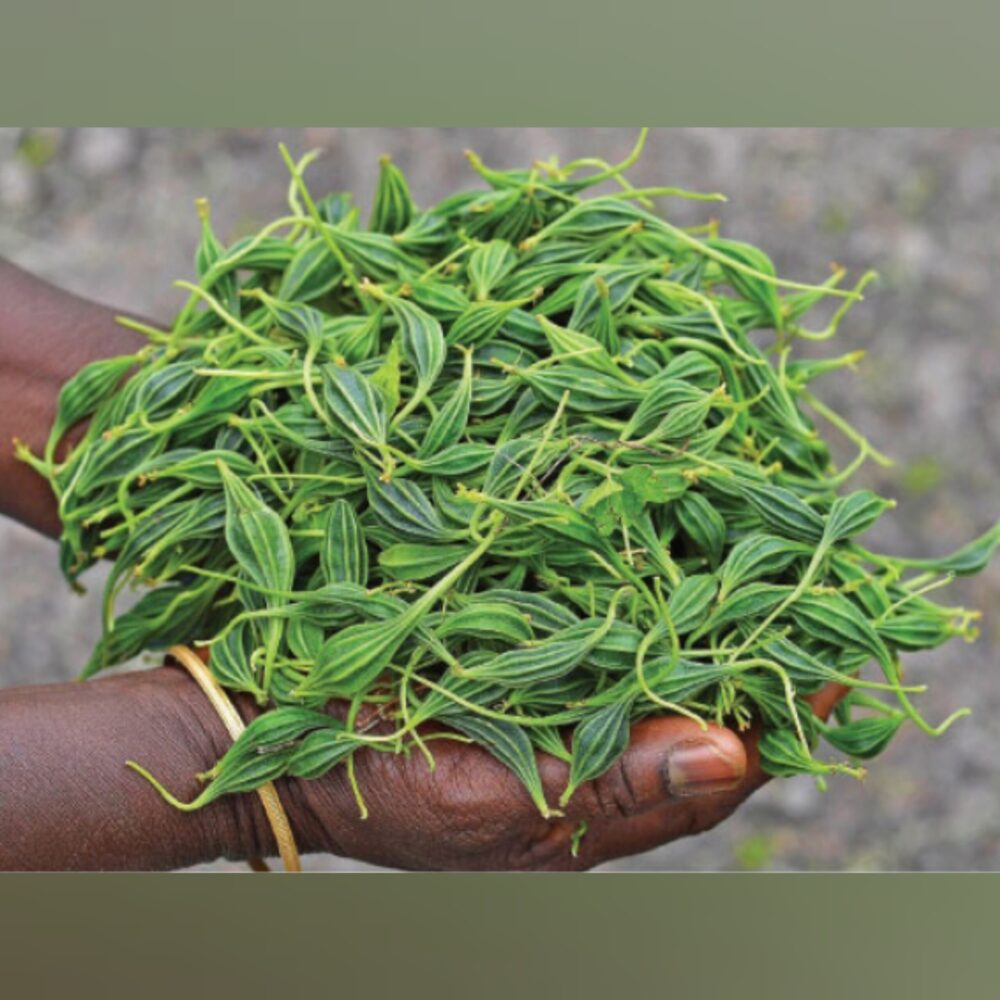
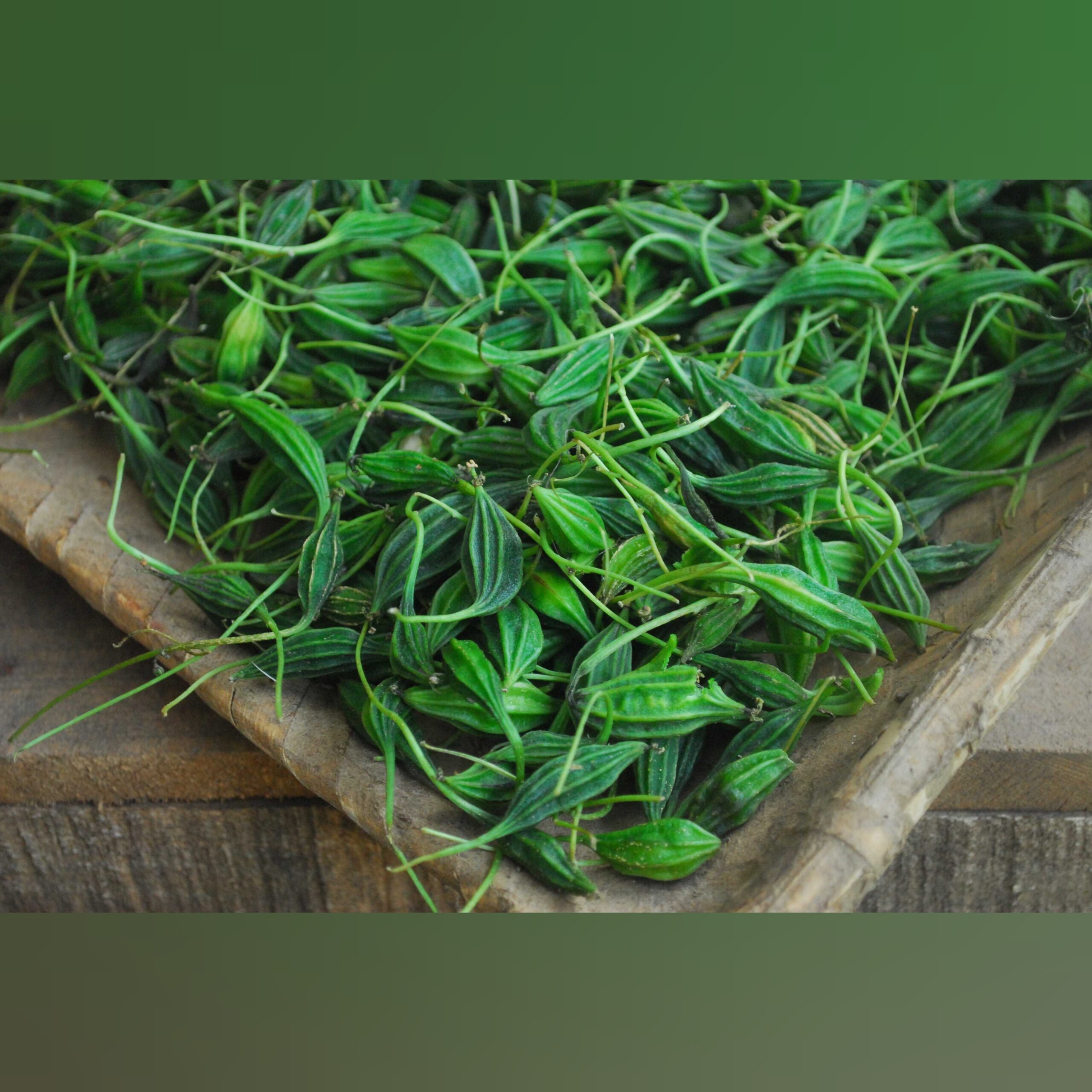
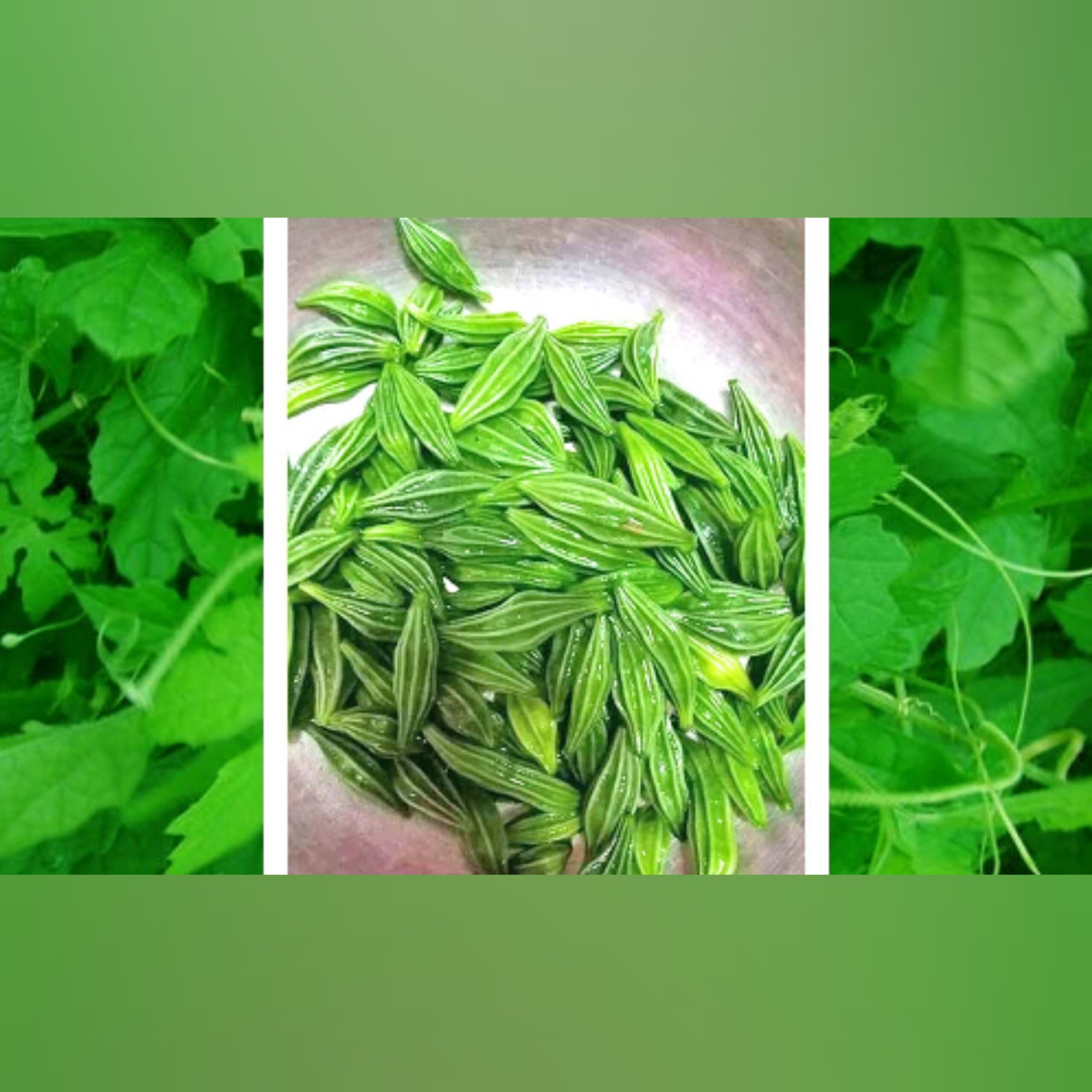

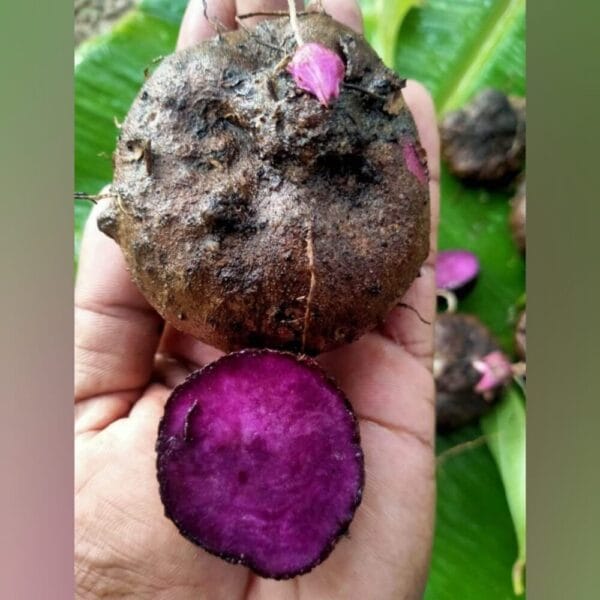
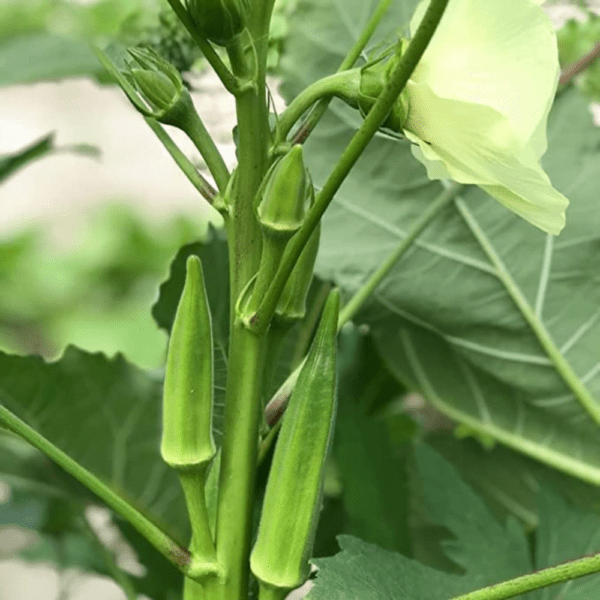

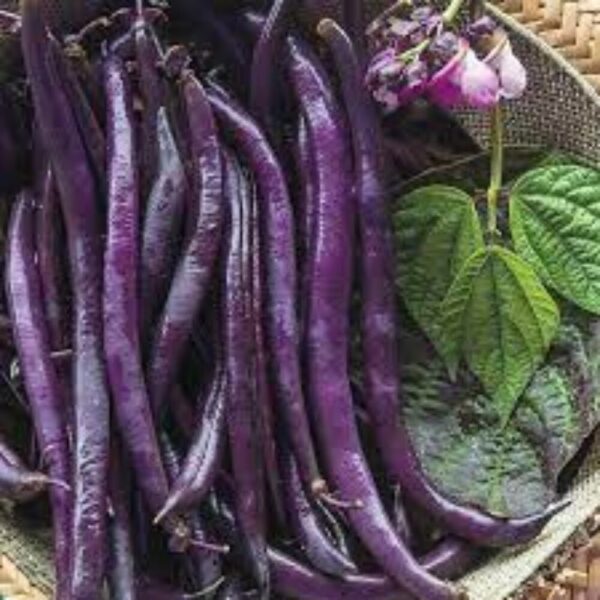

Reviews
There are no reviews yet.